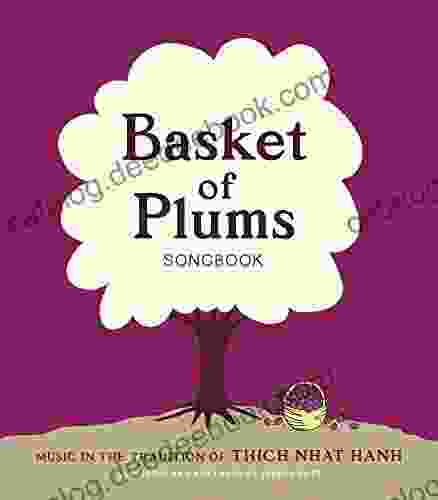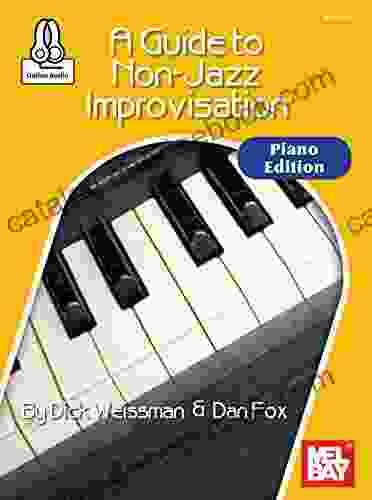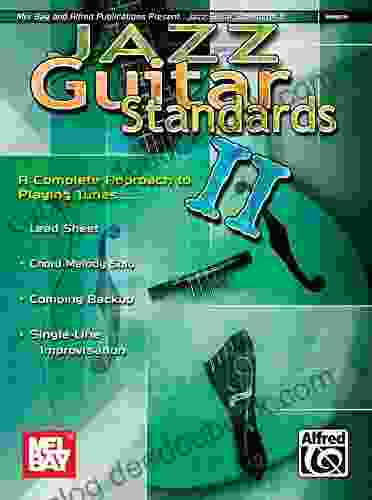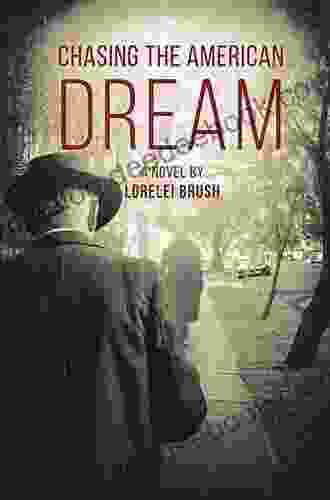Essential Jazz Guitar Standards Part II: Exploring the Harmonic Vocabulary of Jazz

4 out of 5
| Language | : | English |
| File size | : | 25849 KB |
| Screen Reader | : | Supported |
| Print length | : | 224 pages |
In our previous article, we delved into the world of jazz guitar standards, exploring their history and the essential elements that make them enduring classics. In this continuation, we will embark on a journey into the harmonic vocabulary of jazz, unlocking the secrets that lie beneath the surface of these timeless tunes.
Harmonic Vocabulary
The harmonic vocabulary of jazz is a vast and complex landscape, encompassing a myriad of chords, scales, arpeggios, tensions, and substitutions. Understanding this vocabulary is paramount for any jazz guitarist aspiring to master the art of improvisation.
Chords
Jazz chords are the building blocks of harmonic progressions, providing the foundation upon which melodies and improvisations are constructed. Common jazz chords include major, minor, dominant, diminished, and augmented chords, each with its unique sound and function.
Beyond basic chords, jazz guitarists employ a vast array of extended chords, such as seventh chords, ninth chords, eleventh chords, and thirteenth chords. These extended chords add depth and richness to harmonic progressions, allowing for a wider range of melodic possibilities.
Scales
Scales provide the melodic framework for improvisation. Jazz guitarists typically utilize a variety of scales, including major scales, minor scales, pentatonic scales, and blues scales. Each scale has its own unique characteristics and can be used to create distinctive melodies.
In jazz, scales are often used in conjunction with arpeggios, which are broken-down chords played in a melodic fashion. Arpeggios add harmonic color and movement to solos, enhancing their melodic interest.
Tensions
Tensions are notes added to chords to create harmonic intrigue and dissonance. Common tensions include the ninth, eleventh, and thirteenth. These notes can be used to spice up basic chords, making them more complex and interesting.
Using tensions effectively requires a deep understanding of their harmonic function. When used judiciously, tensions can add a touch of sophistication and depth to any jazz guitar solo.
Substitutions
Substitutions are a powerful tool for jazz guitarists, allowing them to create unexpected harmonic shifts. Common substitutions include tritone substitutions, modal substitutions, and parallel substitutions.
Tritone substitutions involve replacing a dominant seventh chord with a dominant seventh chord a tritone away. This substitution creates a sense of harmonic movement and can add a refreshing twist to standard chord progressions.
Modal substitutions involve replacing a chord in a major or minor key with a chord from the parallel mode. This substitution can create a unique and exotic sound, adding a new dimension to familiar progressions.
Parallel substitutions involve replacing a chord with a chord from the same scale degree in a different key. This substitution can create a sense of harmonic fluidity and can provide a surprising twist to standard progressions.
Applying the Harmonic Vocabulary
Now that we have explored the vast harmonic vocabulary of jazz, let's delve into how to apply it to real-world playing. Here are a few tips to help you incorporate these concepts into your playing:
- Start by studying the chord progressions of jazz standards. This will give you a solid foundation upon which to build your improvisations.
- Practice scales and arpeggios extensively. This will help you develop your dexterity and fluency on the guitar.
- Experiment with different tensions to add spice and complexity to your chords.
- Learn how to use substitutions effectively to create unexpected harmonic shifts.
- Listen to recordings of great jazz guitarists to hear how they use the harmonic vocabulary in their solos.
Exploring the harmonic vocabulary of jazz is a lifelong journey. By embracing the concepts of chords, scales, arpeggios, tensions, and substitutions, you will unlock the secrets of jazz improvisation and expand your musical expressiveness exponentially.
So, grab your guitar, dive into the harmonic universe of jazz, and let the music guide your explorations. The journey may be arduous, but the rewards are boundless.
4 out of 5
| Language | : | English |
| File size | : | 25849 KB |
| Screen Reader | : | Supported |
| Print length | : | 224 pages |
Do you want to contribute by writing guest posts on this blog?
Please contact us and send us a resume of previous articles that you have written.
 Book
Book Page
Page Text
Text Story
Story Genre
Genre Magazine
Magazine Newspaper
Newspaper Paragraph
Paragraph Sentence
Sentence Bookmark
Bookmark Shelf
Shelf Foreword
Foreword Preface
Preface Synopsis
Synopsis Annotation
Annotation Footnote
Footnote Manuscript
Manuscript Bestseller
Bestseller Classics
Classics Narrative
Narrative Memoir
Memoir Reference
Reference Dictionary
Dictionary Thesaurus
Thesaurus Resolution
Resolution Librarian
Librarian Card Catalog
Card Catalog Research
Research Reserve
Reserve Academic
Academic Journals
Journals Rare Books
Rare Books Special Collections
Special Collections Literacy
Literacy Dissertation
Dissertation Storytelling
Storytelling Awards
Awards Reading List
Reading List Book Club
Book Club Theory
Theory Sian Hamilton
Sian Hamilton Sue Allen Clayton
Sue Allen Clayton Kelly Artieri
Kelly Artieri Michael Clutterbuck
Michael Clutterbuck Duncan Macmillan
Duncan Macmillan Gerardus Blokdyk
Gerardus Blokdyk Deborah Carr
Deborah Carr Eileen Sisk
Eileen Sisk Antonio J Colmenarez
Antonio J Colmenarez Sandra Tassel
Sandra Tassel Bob Deits
Bob Deits Jaz Akins
Jaz Akins Edwin Carawan
Edwin Carawan Mark Foster
Mark Foster Baby Darling
Baby Darling Juan P Carmona
Juan P Carmona Shinasi A Rama
Shinasi A Rama Alex Anderson
Alex Anderson Sunshine Taylor Reddick
Sunshine Taylor Reddick L J Red
L J Red
Light bulbAdvertise smarter! Our strategic ad space ensures maximum exposure. Reserve your spot today!
 Brian WestFollow ·6.9k
Brian WestFollow ·6.9k Samuel WardFollow ·10k
Samuel WardFollow ·10k Derek BellFollow ·15.6k
Derek BellFollow ·15.6k Henry JamesFollow ·2.1k
Henry JamesFollow ·2.1k Julio Ramón RibeyroFollow ·12.7k
Julio Ramón RibeyroFollow ·12.7k Hugh BellFollow ·2.8k
Hugh BellFollow ·2.8k Melvin BlairFollow ·10.7k
Melvin BlairFollow ·10.7k Chad PriceFollow ·6.1k
Chad PriceFollow ·6.1k

 Hayden Mitchell
Hayden MitchellThe Routledge Handbook of Feminist Peace Research: A...
The Routledge...

 Joe Simmons
Joe SimmonsUnveiling the Lyrical Mastery of Henri Cole's "Blizzard...
In the realm of...

 E.E. Cummings
E.E. CummingsEast End Hardman To Tv Star: The Unlikely Rise Of Danny...
Danny Dyer is one of the...

 Eli Brooks
Eli BrooksMusic in the Tradition of Thich Nhat Hanh: A Journey of...
In the heart of...

 Samuel Ward
Samuel WardAmazing Scenes in Plastic Canvas: Bringing Your...
Plastic canvas is a...

 E.E. Cummings
E.E. CummingsA Comprehensive Guide to Non-Jazz Improvisation for...
: Embracing the Art of...
4 out of 5
| Language | : | English |
| File size | : | 25849 KB |
| Screen Reader | : | Supported |
| Print length | : | 224 pages |












